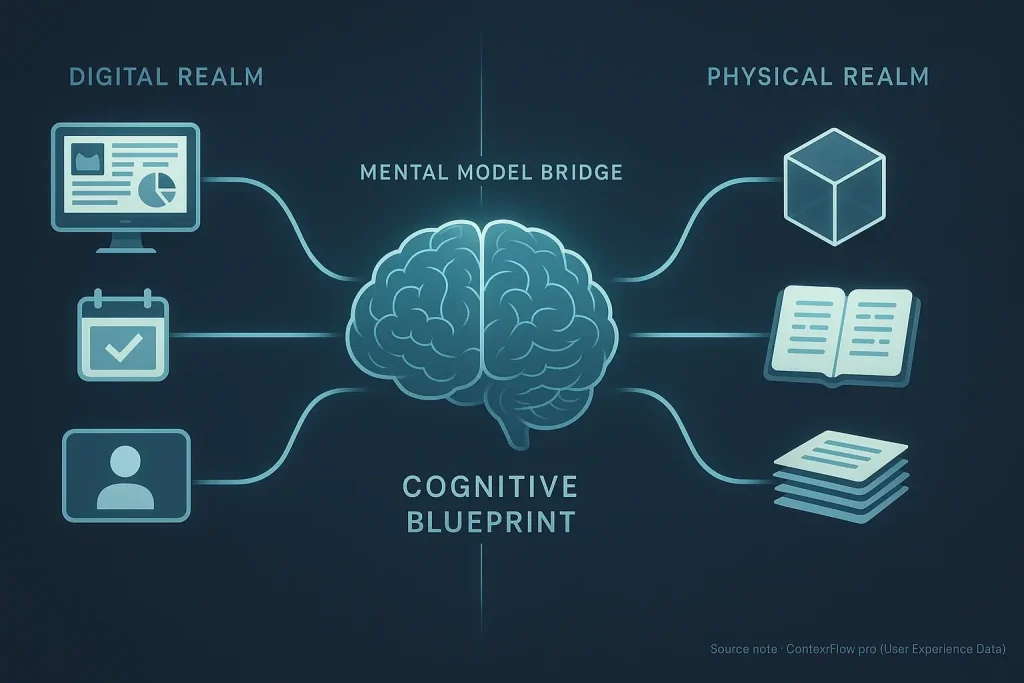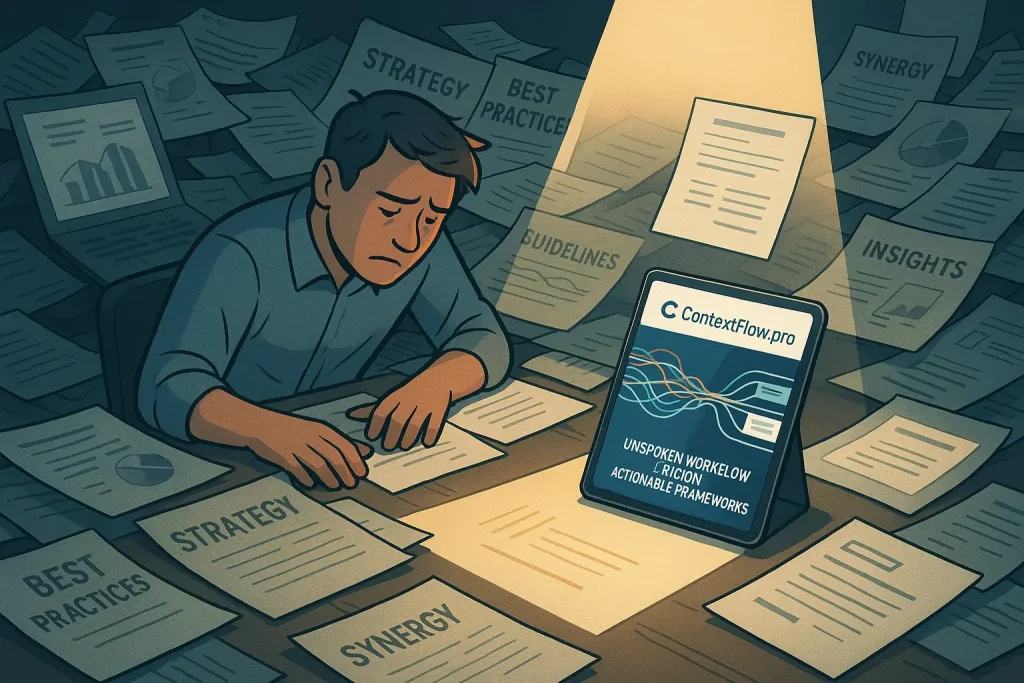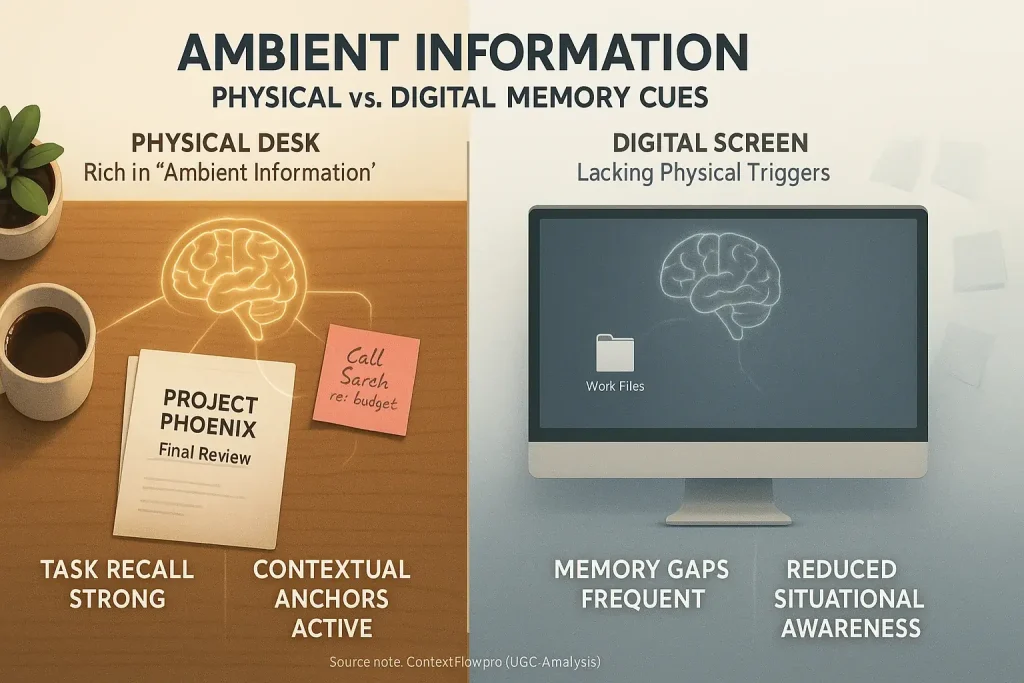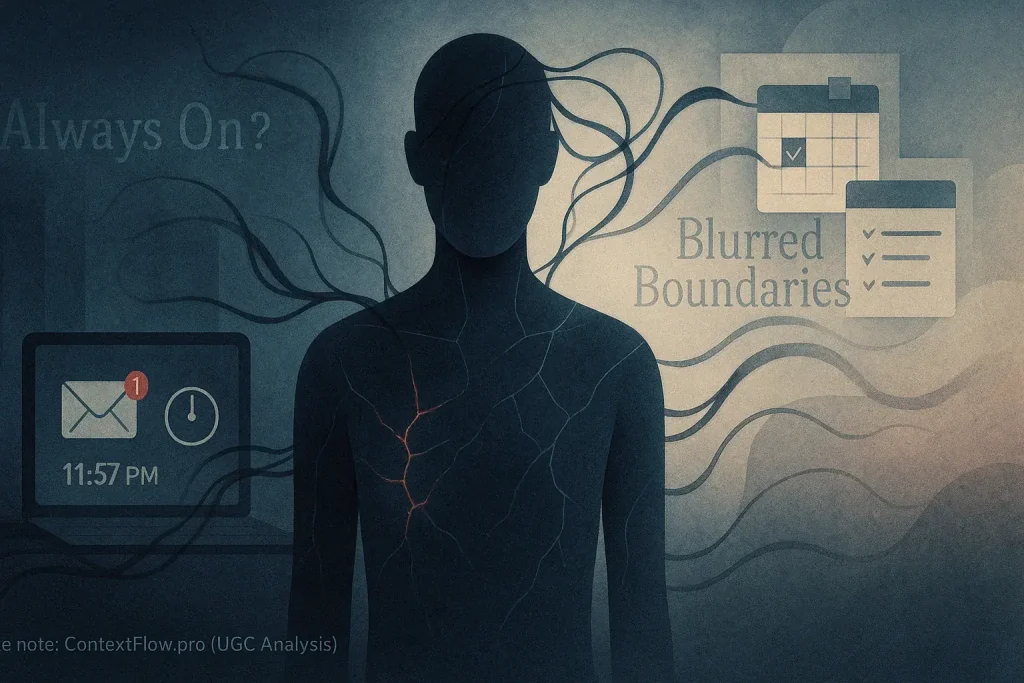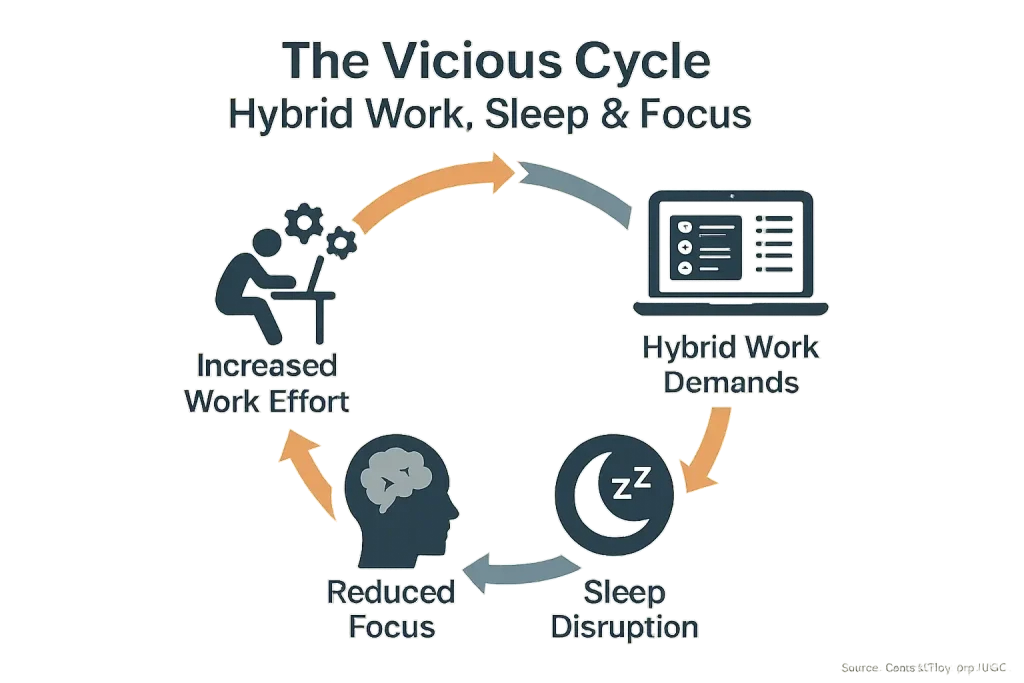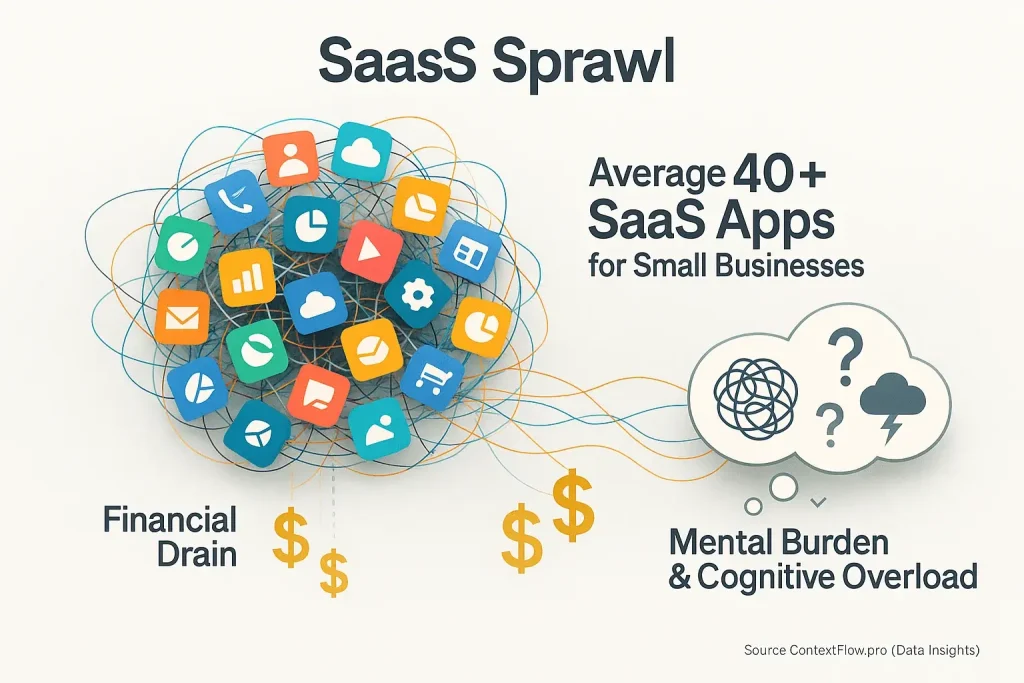The 'Death by Meetings' Epidemic: Why Your Calendar is a Productivity Killer

Does your calendar feel like a relentless digital monster? One devouring your precious work hours? Meetings, of course, serve a purpose. Collaboration often demands them. Yet, their sheer volume in many hybrid environments has become a critical issue. Many users confess their calendars are genuine productivity killers, an epidemic crippling focused work.
The unspoken truth? This constant meeting churn is far more than simple frustration. It directly erodes your capacity for sustained, deep work. We've heard countless stories of professionals struggling. Their focus shatters. Productivity plummets. This isn't just perception; our UGC analysis shows it is a documented impact on output.
ContextFlow.pro now unmasks these pervasive user frustrations about meeting overload. We also detail hard-won strategies from professionals successfully reclaiming their time. This resource provides actionable frameworks. Your goal? To transform your calendar from a productivity killer back into a useful tool for effective work.
The Relentless Grind: User Confessions of Back-to-Back Meeting Hell

Imagine one video call ending. The next one starts. Instantly. No time exists for water, for quick notes, for a mental reset. This daily grind crushes countless hybrid workers; a pattern clear in widespread user feedback. Physical exhaustion mounts steadily. Mental clarity simply evaporates.
This relentless meeting cascade isn't just tiring. It is destructive. Countless user testimonies reveal a core friction point: zero genuine transition time. Meaningful preparation for the upcoming discussion becomes an impossible ideal. Context from the previous meeting vanishes completely. Attempting high-level contribution feels like running a mental marathon without hydration.
An 'always-on' pressure, reported frequently, intensifies this meeting overload. This strain is often self-imposed. Sometimes, company culture silently demands it. The documented result from user experiences? Widespread burnout. Personal effectiveness plummets, even within the meetings themselves. Focus shatters. Contributions weaken.
The Silent Killer: How Meeting Overload Devours Your Deep Work Time
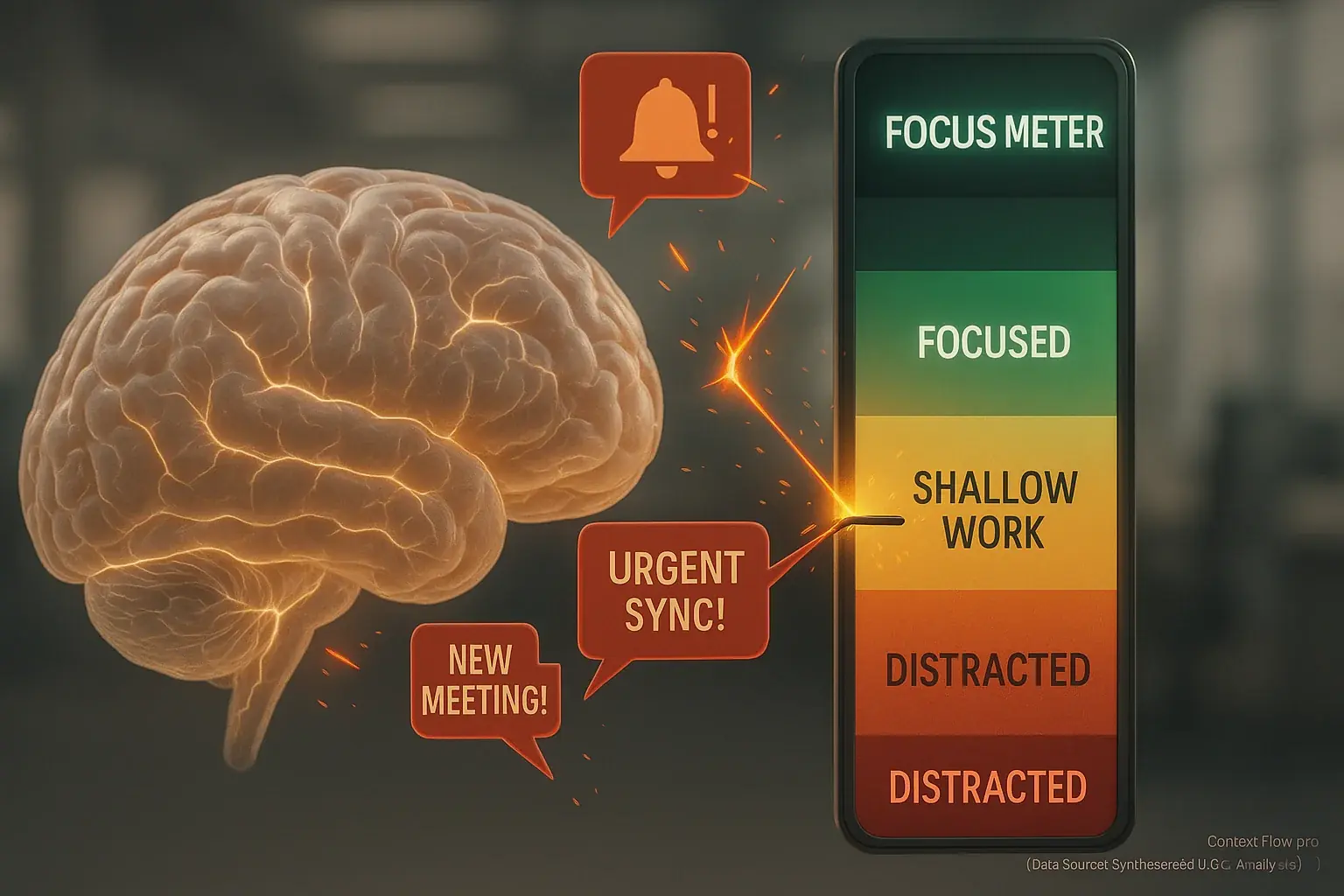
Deep work requires sustained, uninterrupted focus. Knowledge workers depend on it for complex problem-solving and innovation. Here is the brutal truth. Excessive meetings devour your capacity for deep work. This constant splintering of attention, a consistent theme in user feedback, frequently leads to superficial outputs. Your best thinking gets fragmented.
Imagine finally entering that crucial flow state. You are immersed in a complex report. Suddenly, a meeting notification yanks you out. Re-engaging that focus is a significant struggle. Our analysis of user experiences reveals this takes considerable time and mental energy. Each context switch imposes a cognitive cost, draining precious mental resources. This is the agony of interrupted flow.
The long-term consequences of this meeting overload are severe. Reduced innovation becomes common. The quality of output often suffers. Professionals report that "real work" consistently gets pushed to evenings or weekends. This relentless cycle significantly increases stress. Our data synthesis shows this pattern is a critical factor eroding wellbeing and productivity.
Is This Meeting Really Necessary? User Voices Questioning the 'Meeting Culture'
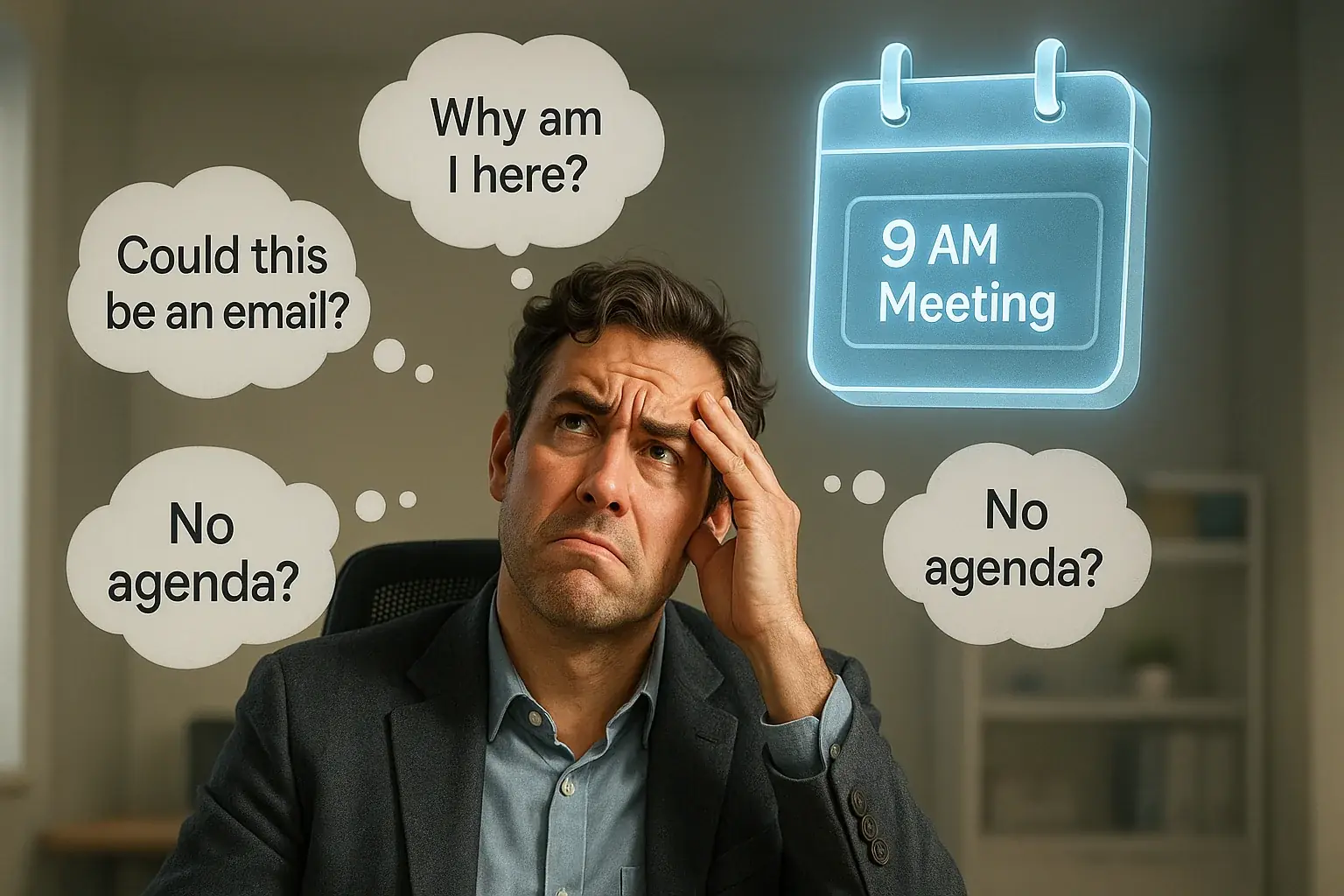
How many times have you sat in a meeting thinking, "Couldn't this have been an email?" You are not alone. This sentiment echoes throughout countless user discussions. Our user experience analysis highlights a deep, shared frustration. This frustration targets a pervasive 'meeting for meeting's sake' culture that plagues many hybrid work environments.
Why do these unnecessary meetings persist? User observations point to several culprits. Habit often drives meeting invitations. Clear communication protocols are frequently absent, making meetings a default. Some professionals even voice a subtle pressure: the need to be 'seen' working, which meetings seem to fulfill, however superficially.
The direct consequences are clear. Wasted time consistently tops the list of user complaints regarding meeting culture. Opportunities for focused, deep work diminish significantly. General morale erodes under the weight of unproductive gatherings. Users are actively seeking, and demanding, alternatives to this draining cycle.
Reclaiming Your Calendar: User-Tested Strategies to Tame Meeting Overload
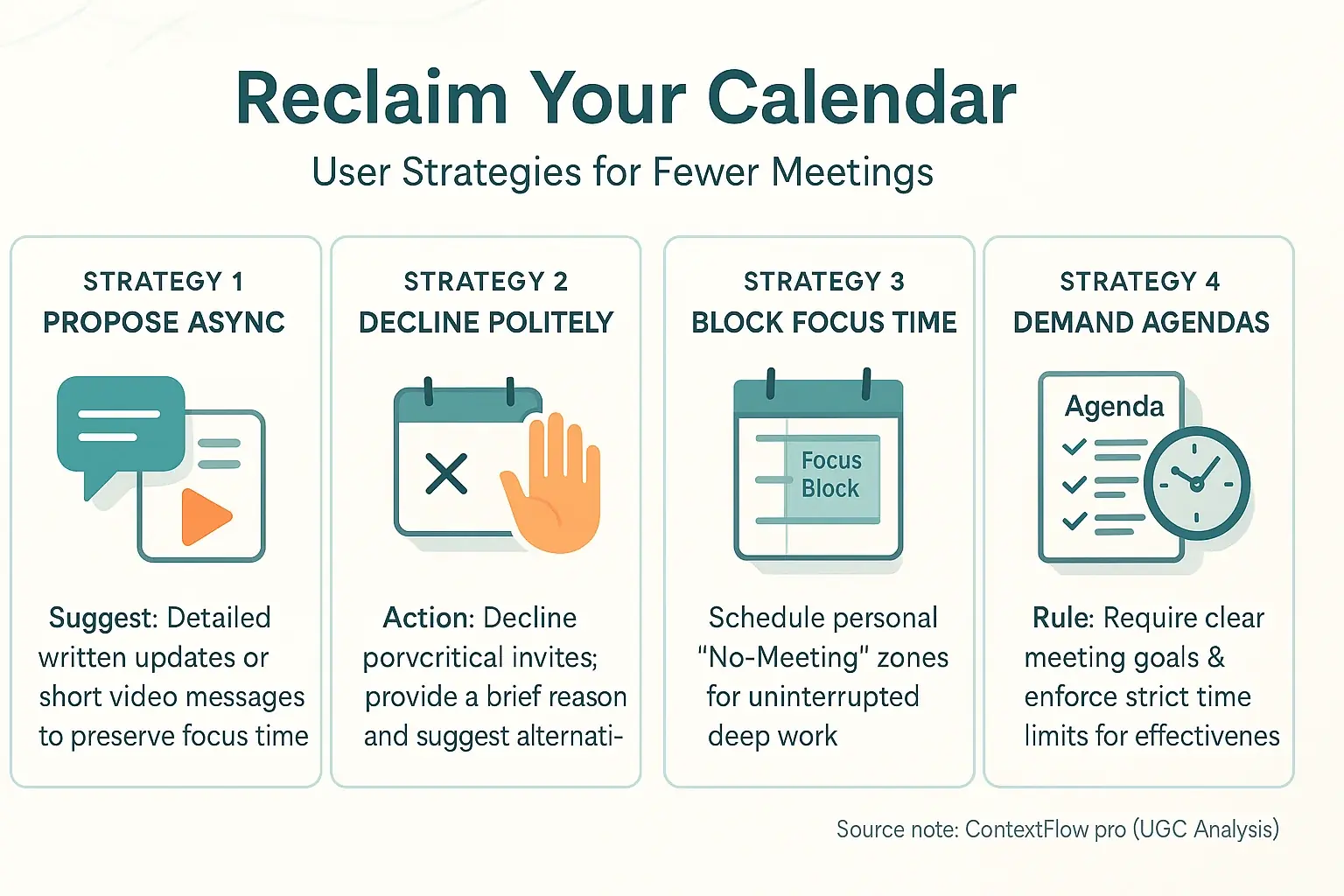
Professionals constantly battle meeting overload. Our analysis of user-generated content reveals practical tactics individuals successfully employ. These strategies empower you to reclaim calendar space and protect crucial focus time.
- Propose Asynchronous Alternatives. Many users successfully suggest detailed written updates. Or a short video message. This approach respects everyone's schedule. It allows for considered responses, not just immediate reactions. User communities widely report this method preserves precious focus time.
- Politely Decline Non-Essential Invites. Is your attendance truly critical? Users find courage to decline. They provide a brief, professional reason, perhaps suggesting an alternative communication method. This protects their deep work blocks. A common user observation: this practice encourages organizers to be more selective. It's a powerful move.
- Champion "No-Meeting" Zones. Users frequently establish personal focus blocks in their calendars. Some teams even institute entire no-meeting days, a strategy gaining significant traction. The benefit? Uninterrupted time for demanding tasks. Our synthesis of user discussions shows this dramatically boosts output. It's a game-changer for many.
- Enforce Clear Agendas and Strict Time Limits. Users increasingly demand a clear purpose before accepting invites. What are the goals? What are the deliverables? They also help keep meetings on track and on time, sometimes by gently redirecting off-topic discussions. This simple discipline, user reports confirm, transforms meeting effectiveness. Less wasted time. More results.
Calculate Your 'Meeting Tax': How Much Time (and Productivity) Are You Really Losing?
Your Meeting Tax Calculator
Find out how much time and potential productivity you're losing to excessive or unnecessary meetings.
Your Weekly Meeting Tax:
Total meeting hours: 0 hours
Unnecessary meeting hours: 0 hours
Estimated weekly cost: $0
Meetings often feel like a black hole for productive hours. Our analysis confirms this widespread sentiment. This 'Meeting Tax' calculator acts as your personal auditor. It quantifies precisely how much time these gatherings truly cost you. The raw data can be startling.
Input your typical meeting load. See the impact. This tool provides a concrete figure for your personal meeting tax. Understanding this number is often the catalyst for real change. You might be surprised by what you uncover.
Reclaim Your Time, Reclaim Your Focus: The Path to a Meeting-Optimized Hybrid Workflow
Excessive meetings damage hybrid productivity. Many users voice this core concern. You hold the power to reshape this. Protecting deep work is essential. Your calendar does not need to be a battlefield. With smart moves, you transform it. It becomes a powerful ally for strong focus. This improves your productivity.
Careful meeting optimization delivers more than efficiency gains. It builds team wellbeing. This fosters a human-centric hybrid work experience for everyone. The clear aim is lasting focus and group success. Begin implementing these important strategies today. Explore further insights on ContextFlow.pro. Take control.

